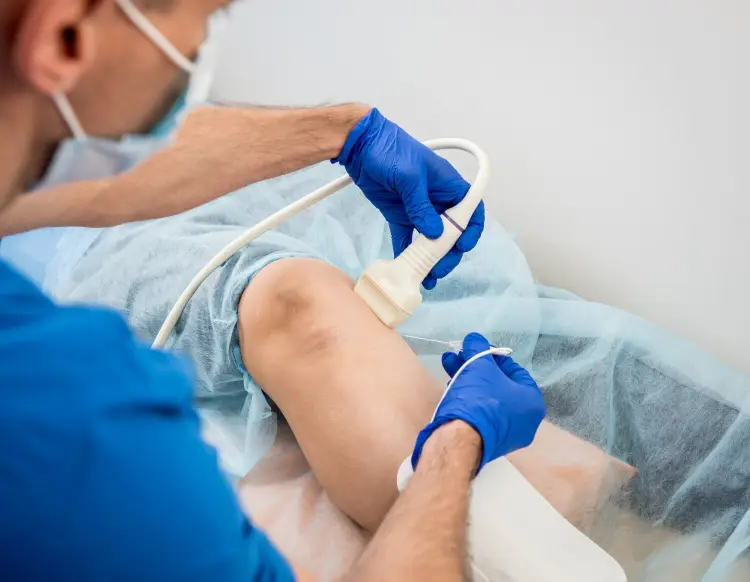Healthcare providers typically recommend medications before considering ablation as a viable treatment option, although ablation may be recommended as the initial solution for some individuals.
To perform an ablation procedure, your cardiologist will make a small incision in either your neck, arm or groin before inserting a catheter (tube) into one of your blood vessels.
What is an Ablation?
Ablation is a minimally invasive surgical procedure used to identify and destroy abnormal electrical pathways causing arrhythmias, including atrial fibrillation (AFib), certain heart rhythm disorders such as ventricular tachycardia (VT) or even stroke. Ablation also helps reduce potential complications related to these disorders such as arrhythmias such as arrhythmic episodes.
At cardiac ablation, physicians use electrical energy to burn or freeze areas of tissue that cause an irregular heartbeat. Your physician can pinpoint its location by conducting an electrophysiology study; this test uses electrodes placed over your chest skin to record a map of electrical activity within your heart and record where its abnormal electrical pathways lie. Once located, catheters can be inserted in these locations in order to perform ablation procedures on that pathway.
Electrical ablation employs the same form of energy that is utilized during subtraction laser material processing such as engraving, cutting and drilling. A doctor can use a computer program to control exactly how much energy is applied at each spot while keeping track of each catheter during their procedure.
Before initiating an ablation procedure, a doctor may provide blood-thinners to prevent clots from forming on catheters that will remain inside your body during this lengthy procedure. You will need to remain flat throughout this time and it could take multiple hours for him/her to finish their work.
At an ablation, you will be given local anesthetic and sedation to ease any discomfort during the procedure. Lie still during it if necessary – longer periods without moving can be uncomfortable – though depending on its type, additional medications may be given to relax muscles further.
After surgery, you will spend several hours recovering in the recovery room where a team will monitor your heart rate, breathing rate and other vital signs. If your ablation was complex or you require medical observation for other health problems, however, staying overnight in hospital may be necessary.
During an Ablation
Electrical signals that make your heart beat must follow a specific pathway through its chambers; any disruption in this pathway causes irregular heartbeats known as arrhythmias, while ablation creates tiny scars in heart tissue to block these unusual signals and restore normality to your pulse rate. Thin, flexible tubes called catheters are often used for this process. Your doctor inserts them through blood vessels in your groin or shoulder to increase visibility on X-ray images of blood vessels and your heart. Dye may be injected through the catheter so they appear more clearly on X-ray images, and sensors on its tip send electrical pulses directly to your heart while recording its electricity – this information helps doctors pinpoint where you have an abnormal heart rhythm and decide where ablation should be performed.
Ablation involves your doctor using either heat or cold energy to scar the area in your heart where abnormal signals are triggering arrhythmias, whether through catheter insertion into blood vessels in your groin or more commonly through surgery. Surgery is often used when medications and other treatments like cardioversion don’t work effectively enough.
If you suffer from atrial fibrillation (Afib), a form of arrhythmia, ablation can help protect you from strokes by slowing the way your heart beats and decreasing the risk of blood clots that could otherwise break off and lead to strokes. Ablation may also help treat conditions like ventricular tachycardia which causes too rapid of heartbeats – these conditions require different forms of treatment than Afib ablation alone.
After an ablation, you may experience fatigue for several weeks after leaving the hospital, especially if you spent multiple nights there. This is perfectly normal and everyone heals at their own pace; if your symptoms worsen or you experience any trouble exercising or returning to work, talk with your physician immediately about alternative treatment plans that may help.
Banner Health conducted a study that revealed many patients who underwent ablation reported experiencing prolonged fatigue as the most troubling side effect, which often increased anxiety about whether or not it had worked.
After an Ablation
Ablation allows us to remove abnormal tissue that causes arrhythmias. This helps stabilize your heart rhythm and alleviate symptoms like chest fluttering and lightheadedness as well as prevent life-threatening arrhythmias from occurring in the future. Furthermore, an ablation also lowers your risk of blood clots that could potentially lead to stroke.
Physicians can perform ablation in either a hospital or outpatient surgery center. The procedure usually lasts between two and three hours and most people can go home the same day after observation; some may need to remain overnight in case any issues arise that require hospitalization.
Before the procedure begins, we will administer an intravenous sedative to help relax you, while some patients may need general anesthesia. Next, our medical team will clean, shave and numb the area around the catheter insertion site (usually your groin, arm or neck) using a needle puncture; they then insert multiple catheters (wires) through these sheaths or veins into your body – guided with X-ray imaging towards their destination in your heart.
Each catheter features electrodes that can detect your heart’s electrical activity, much like an EKG. Once they locate the source of arrhythmia, your doctor may employ either mild radiofrequency heat energy or cryoablation techniques on that spot – both methods target and destroy troublesome tissue, blocking out abnormal electrical signals from reaching other areas of your heart.
At the conclusion of your procedure, your EP will remove the catheters and apply pressure or a collagen patch to reduce bleeding at its source. After this stage is completed, hospital staff will monitor your recovery closely over several hours.
Ablation recovery time depends on the type of procedure and its success; if any questions or concerns arise regarding recovery, be sure to reach out. In the meantime, follow your cardiologist’s recommendations regarding exercise and other treatment methods tailored specifically for your condition.
What to Expect
After catheter ablation, you will be required to lie still for two to six hours to reduce bleeding at the site where the catheter was inserted. Medical staff will monitor your heart closely during this period; some people can go home immediately while others must stay overnight in hospital. Furthermore, you may require blood-thinning medication prior and following your ablation procedure in order to help avoid blood clots forming in your system.
Ablation involves your healthcare provider inserting several catheters (small tubes) into blood vessels in your groin, shoulder or neck and attached with sensors that send electrical impulses that record heart activity – helping identify the area responsible for your arrhythmia. They then use radiofrequency energy to inactivate or block off that area using radiofrequency energy.
Once the procedure is over, your healthcare provider will remove the catheters and may apply pressure or a collagen patch at the catheter insertion site to reduce bleeding. You will then need to lie on your back for several hours and may also be hooked up to a device which measures heart rhythm.
Catheter ablation is an outpatient procedure and does not require you to stay in hospital overnight. Depending on your workload, however, you may require some time off work after having undergone your procedure.
Some patients may experience difficulty passing food through their digestive tract after an ablation procedure. While this should eventually resolve itself, taking smaller meals and taking an acid blocker such as omeprazole or lansoprazole may help manage this issue more effectively.
Most patients find relief after their ablation and are able to reduce or eliminate atrial fibrillation symptoms after ablation. However, for some individuals who continue having episodes unrelieved by medication alone, your doctor may suggest surgical procedure or another form of treatment such as immunomodulation therapy or immunotherapy; your cardiologist can explain all your options thoroughly in order to help make a more informed decision about them.
Disclaimer: The content on this blog is intended for general informational purposes only. It is not a substitute for professional medical advice, diagnosis, or treatment. Always consult qualified healthcare providers for personalized advice. Information regarding plastic surgery, dental treatment, hair transplant, and other medical procedures is educational and not a guarantee of results. We do not assume liability for actions taken based on blog content. Medical knowledge evolves; verify information and consult professionals. External links do not imply endorsement. By using this blog, you agree to these terms.










